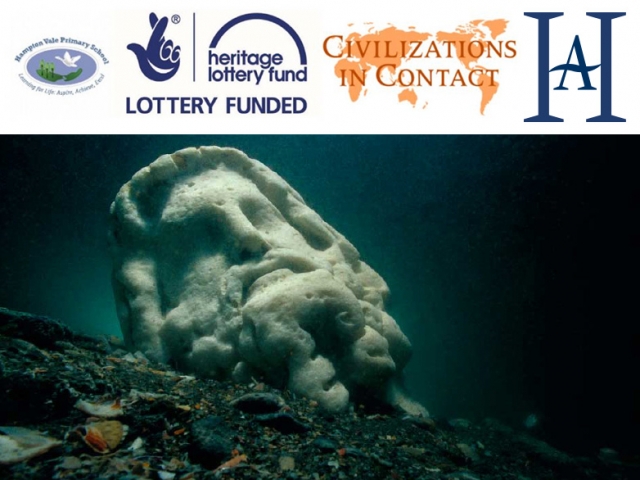Sunken Settlements
Comparing lost treasures of Ancient Egypt and Bronze Age Britain

Have you ever used archaeology and object handling as a way to hook the interest of children in to primary history? Are you searching for creative ways to compare and contrast ancient civilizations? Would you like to extend your subject knowledge? Want inspiration for building in fascinating local history seamlessly in to your Key Stage Two? Then look no further!
Jump to the Sunken Settlements project resources
Egypt's lost sunken cities
In 2016 French archaeologist Franck Goddio and the Hilti Foundation supported the British Museum in organising a world class exhibition "Sunken cities; Egypt's lost worlds". This included often colossal artefacts lifted off the Mediterranean Sea bed near Alexandria in Egypt from the previously lost sites of the cities of Thion-Heracleion and Canopus, dating from the first millennium BC.
Must Farm Britain's Bronze Age Pompeii
This exhibition coincided with the continued excavation by Cambridge Archaeological Unit (based at Cambridge University) of a Bronze Age site near Peterborough at Must Farm. They uncovered remarkable artefacts buried in the mud of a riverbank into which a burning roundhouse built on stilts had collapsed between 1000 and 800 BC (from the same millennium as the sunken Egyptian cities). The mud preserved organic material that would otherwise have rotted such as log boats, food remnants and textiles. The site has been dubbed “Britain's Pompeii”.
The Sunken Settlements project
In 2017 Hampton Vale Primary School in Peterborough received Heritage Lottery Funding for Year 6 pupils to complete a project comparing the Egyptian and Must Farm sites.
This resource (written and compiled by HA Fellow, Andrew Wrenn) aims to disseminate the project and materials developed as part of Sunken Settlements to show
- how two ancient civilizations at Key Stage Two (Ancient Egypt and Bronze Age Britain) can be compared
- how local history can be built in to planning that combines national and international history.
- an example of how fascinating land and sea based archaeology can be replicated in the classroom
Sound interesting? If so and you want to see the downloadable plans, package of resources, film clips and learn about the historical background then read on (via Sunken Settlements project outcomes link below).
Photograph: A sunken statue head on the seabed off Alexandria, Egypt. Credit: Christoph Gerigk; © Franck Goddio/Hilti Foundation

